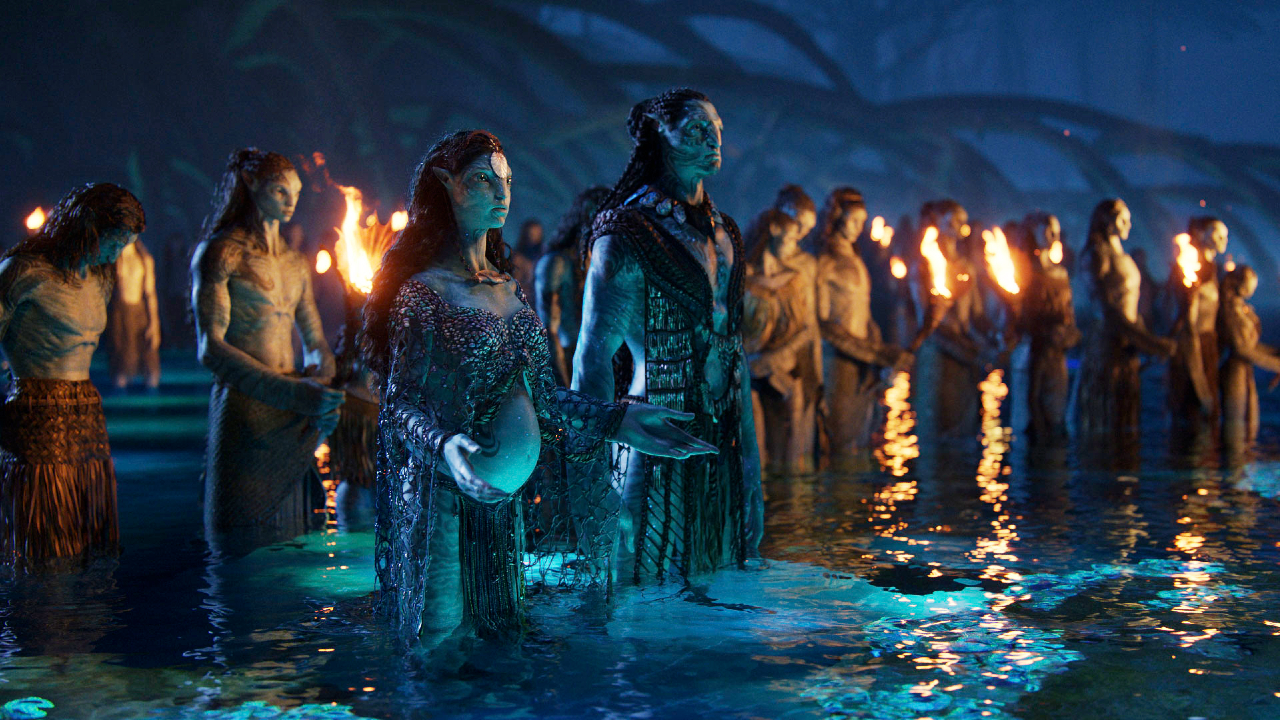Avatar 2 Producer Explains What So Many Movies Get Wrong With 3-D
What have movies gotten wrong with 3-D?

It can be a tough decision when a visually-striking film comes out and you don’t know whether to watch the original release or spend a little extra on the 3-D version. 3-D has come a long way since buying red and blue lensed 3-D glasses just to see some slow-moving pop-ups like when I saw Spy Kids 3: Game Over in 2003. Movies have also gotten the 3-D conversion treatment recently like Shazam! where director David F. Sandberg shared his thoughts that the conversion is too much of a hassle and a real need for 3-D without the glasses. With the long-awaited release of Avatar: The Way of Water coming to theaters in its 3-D glory, Avatar 2 producer Jon Landau explains what so many movies get wrong about 3-D.
The recent release of Doctor Strange in the Multiverse of Madness reached a high verdict to buy that 3-D ticket and for you to put back on those 3-D glasses. The Hollywood Reporter would agree with that as they proved that 10% of moviegoers paid 20-30% more for a 3-D ticket, bringing back the 3-D trend. Another film to lure audiences into wearing 3-D glasses again would be Avatar: The Way of Water. And Jon Landau recently spoke to THR about how 3-D is better used when it is made with the film compared to converting it with 3-D elements.
I think what happened is some people got lost, and there’s a period of time where people felt that converting something to 3D made it a better movie; 3D does not change the movie, 3D exacerbates whatever the movie is. I think that people were doing it as an afterthought to a process, as opposed to [using] 3D as a creative element — no different than lighting, no different than focus, no different than camera movement — that a filmmaker needs to bring a sensibility of how to use that to enhance the narrative storytelling.
An example of an early 3-D release would be 2005’s Chicken Little where the 3-D version was released in limited theaters. Then, Dreamworks Animation got the 3-D treatment starting with 2009’s Monsters Vs. Aliens. That same year, though, James Cameron’s Avatar hit theaters and was known as one of those movies that you absolutely had to see in 3-D. That was the format over 70% of people chose to see for Avatar which helped the movie become one of the highest-grossing films at the time, making $1.85 billion in 2010. However, Clash of the Titans rushed its 3-D conversion and was not worth the price of paying extra for a 3-D ticket, turning people away from the format.
This seemingly proves that Hollywood cannot afford to convert all of their films into the 3-D format, as there will be a number of angry filmgoers wanting refunds if they were not satisfied with the 3-D experience. James Cameron has not been shy towards 3-D conversions of his own films like when he re-released Titanic in 3-D as well as when Terminator 2 got a 3-D conversion. But that is only because James Cameron and company know what should go into a 3-D film. This revolutionary director has his own opinions about the use of 3-D like when he disagreed with the use of 3-D in Iron Man 3 and Man of Steel as an excuse for studios to make more money and push 3-D conversions on directors who are not comfortable and do not like 3-D. With the problem of 3-D films being the conversion process, James Cameron believes that 3-D cameras and technology must be used instead of conversion as the answer.
So, why should Avatar: The Way of Water be any different in 3-D? Not only can we trust Avatar’s 3-D success based on its previous film, but because of its ocean-centric scenes that can bring audiences into the world of Pandora. This movie has the potential to revitalize the 3-D market in that a number of formats will be available for the upcoming movie like high resolution, high frame rates, premium large formats, different sound systems, and 160 different languages. This can provide the opportunity for movie theaters to upgrade themselves to fit this premium formatting and for other filmmakers who follow suit to have a place to show their movies as well. IMAX can even make a comeback by showing more films in the 3-D format.
Avatar: The Way of Water could be the movie we have been waiting for to show studios a thing or two about how to use 3-D for the sake of art instead of profit. To be able to delve into the world of Pandora and its oceanic beauty as soon as those 3-D glasses come on. Time to invest in some 3-D tickets when Avatar: The Way of Water is released in theaters on December 16th.
Your Daily Blend of Entertainment News

Just your average South Floridian cinephile who believes the pen is mightier than the sword.
